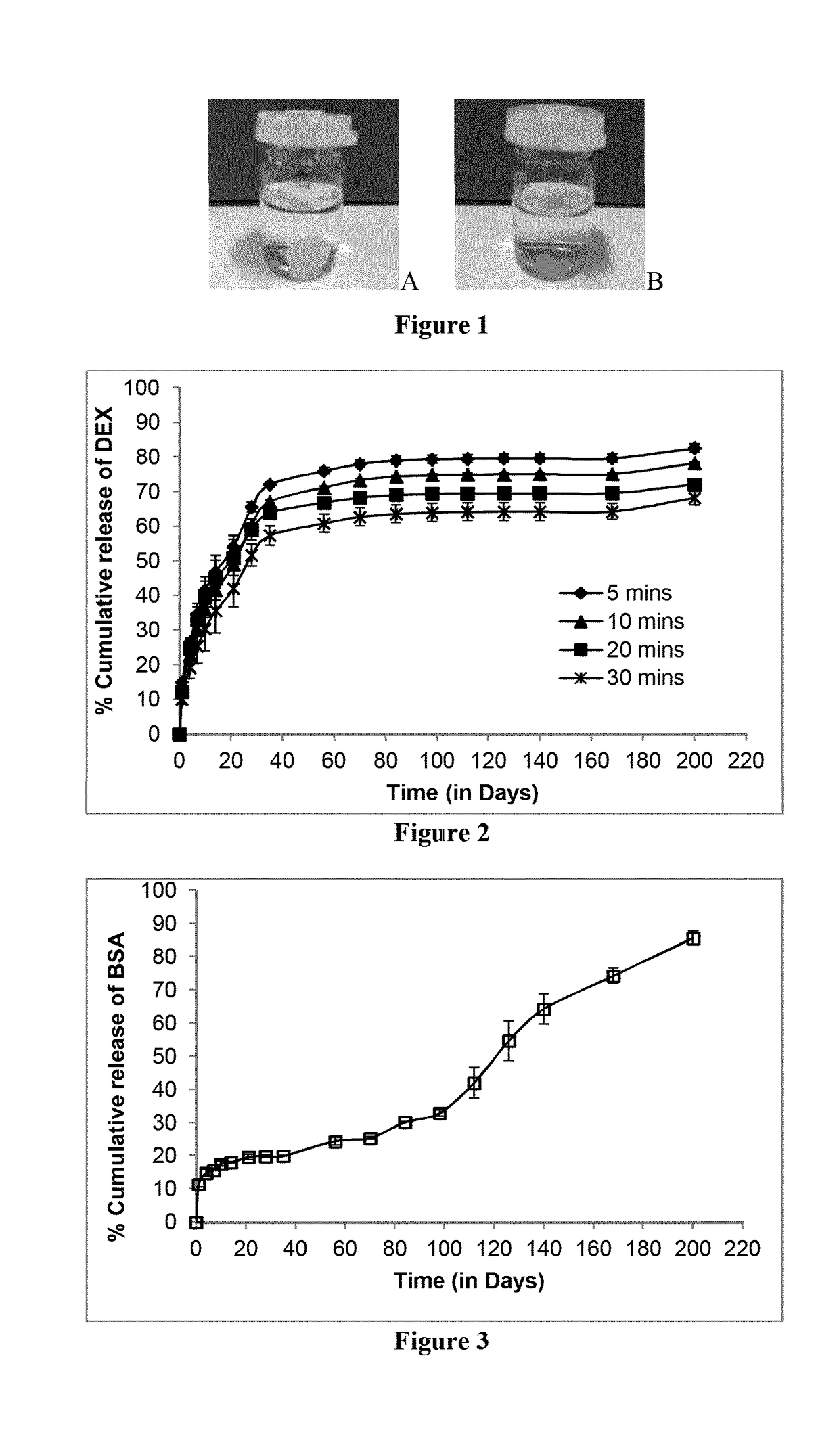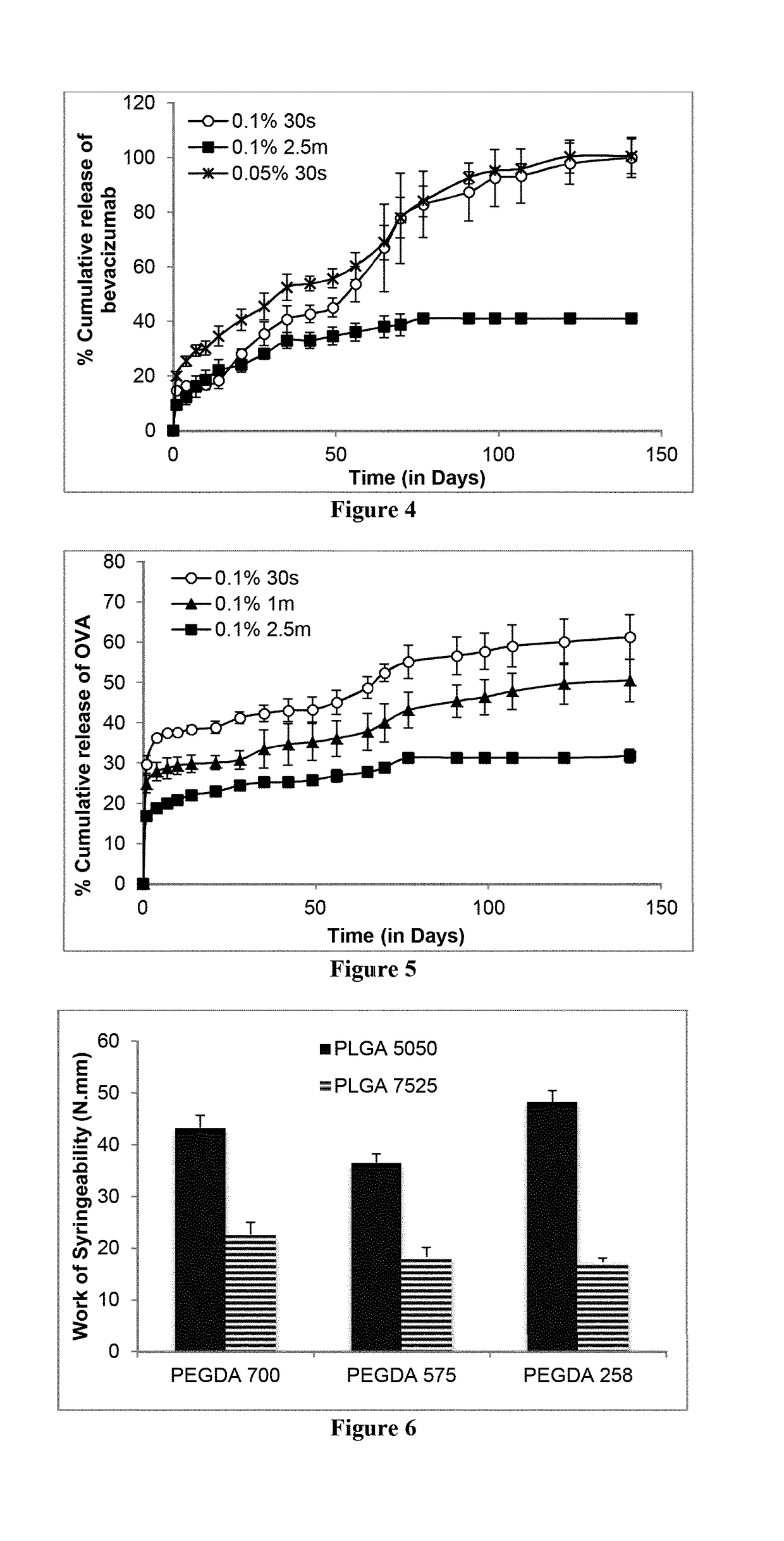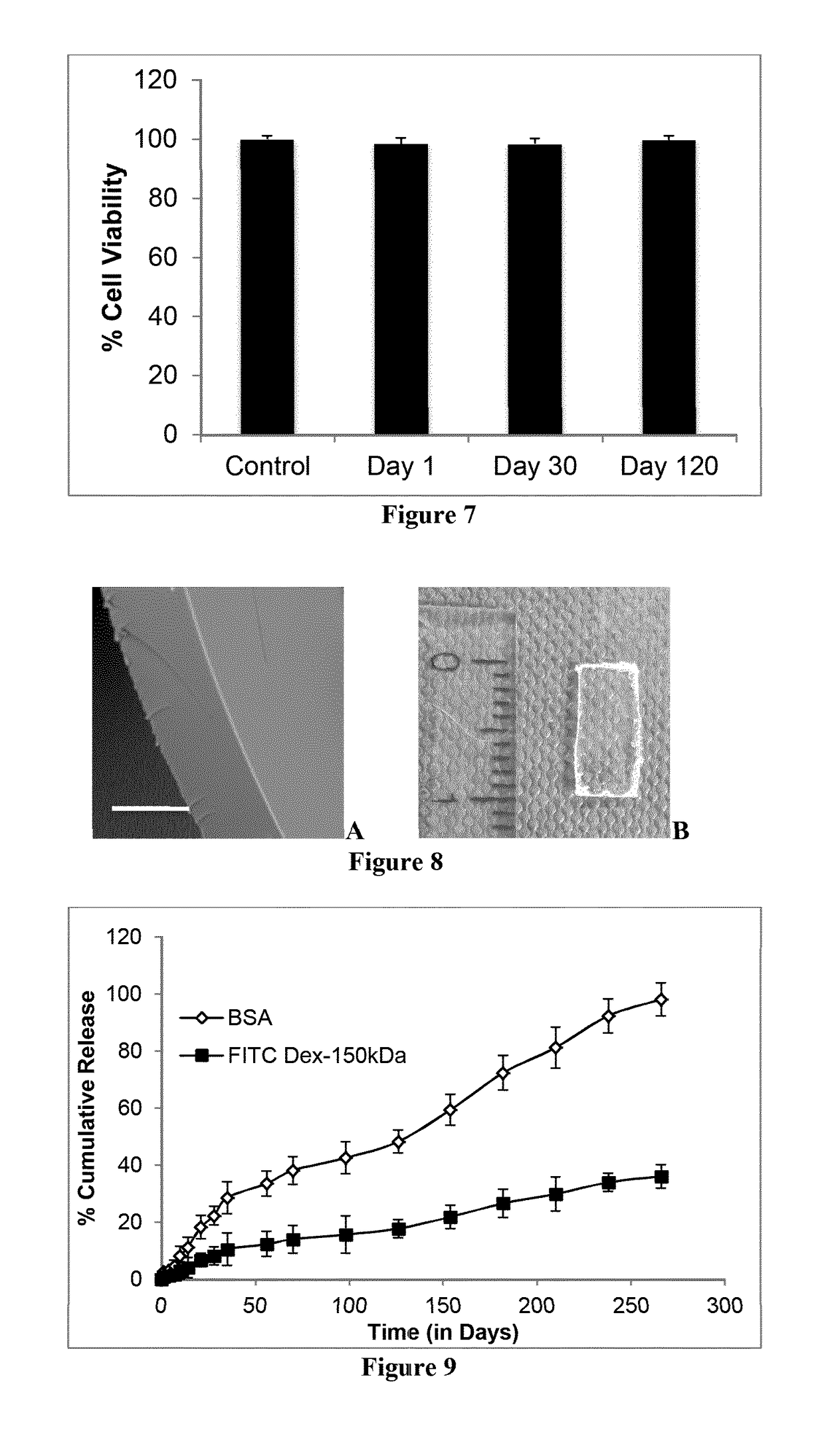Ocular compositions
a technology of compositions and ocular parts, applied in the field of ocular parts, can solve the problems of low or sub-therapeutic drug levels, difficult access to retina, choroid, etc., and achieve the effects of reducing the risk of choroid toxicity, and improving the ps of the ey
- Summary
- Abstract
- Description
- Claims
- Application Information
AI Technical Summary
Benefits of technology
Problems solved by technology
Method used
Image
Examples
example 1
, Preparation of ISPcl Gel Formulations
[0215]For preparation of ISPcl, the molecules under investigation (DEX, OVA, BSA, FITC-dextran 150 kDa and BVZ) were firstly added in selected PEGDA (Mw=700 Da) at a concentration of 0.5% w / w. Once the molecules were fully dissolved or suspended, the desired amount of PLGA 75 / 25 was then added to the molecule / PEGDA mixture and left to dissolve at room temperature to produce 30% w / w PLGA formulations. Prior to photocrosslinking predetermined amount of photoinitiator Irgacure® 2959 (2% w / v in 70% ethanol in water as stock solution) was added to the formulation and vortexed for predetermined time to ensure complete mixing.
example 2
[0216]For drug release studies selected ISPcl gel formulation were injected (approx. 0.2 g or 0.1 g) into desired amount of PBS (pH 7.3±0.2). Sink conditions were maintained for each drug type. ISPcl were formed by exposing them immediately to 365 nm using bench-top UV light (at 3.1±0.1 mW / cm2, CAMAG, Muttenz, Switzerland) for varying periods of time in PBS. The implants were stored in an incubator (37° C. and 60 rpm) for the duration of the release study. At predetermined time intervals the entire PBS medium was removed and replaced with equal amount of fresh PBS. All the experiments were carried out in triplicates. The concentration of released drug molecule in the PBS samples was analyzed as described below.
[0217]Analysis of DEX and TA samples were carried out using reversed-phase HPLC with UV detection (Agilent 1260 Infinity Quaternary System) using an Agilent Zorbax Eclipse Plus 250 mm C18 column (250 mm length, 4.6 mm internal diameter and 5 μm par...
example 3
, Syringeability of ISPcl
[0221]Syringeability is a very important parameter in considering whether a formulation is suitable to be delivered via a syringe and needle, especially if the needle in question has a small bore, as would be required for ocular delivery. Therefore, Work of Syringeability (WoS) was investigated to determine the effort that would be required to expel the ISPcl gel formulations through 27G needle that is commonly used in intraocular injections. Briefly, 1 ml disposable medical syringes (Becton, Dickinson and Company, Oxford, UK) were filled with the ISPcl gel formulations to a constant height equivalent to 0.1 ml. Using the Texture Analyser (Stable Micro Systems, Surrey, UK), the content of the syringe was expelled at a rate of 0.5 mm / second. The area under the resultant force-distance plot was used to determine the WoS using the Exponent TA.XT software (Version 4.0). The WoS observed relating to expelling air from a blank syringe was subtracted from the exper...
PUM
| Property | Measurement | Unit |
|---|---|---|
| molecular weight | aaaaa | aaaaa |
| molecular weight | aaaaa | aaaaa |
| wavelength | aaaaa | aaaaa |
Abstract
Description
Claims
Application Information
 Login to View More
Login to View More - R&D
- Intellectual Property
- Life Sciences
- Materials
- Tech Scout
- Unparalleled Data Quality
- Higher Quality Content
- 60% Fewer Hallucinations
Browse by: Latest US Patents, China's latest patents, Technical Efficacy Thesaurus, Application Domain, Technology Topic, Popular Technical Reports.
© 2025 PatSnap. All rights reserved.Legal|Privacy policy|Modern Slavery Act Transparency Statement|Sitemap|About US| Contact US: help@patsnap.com



